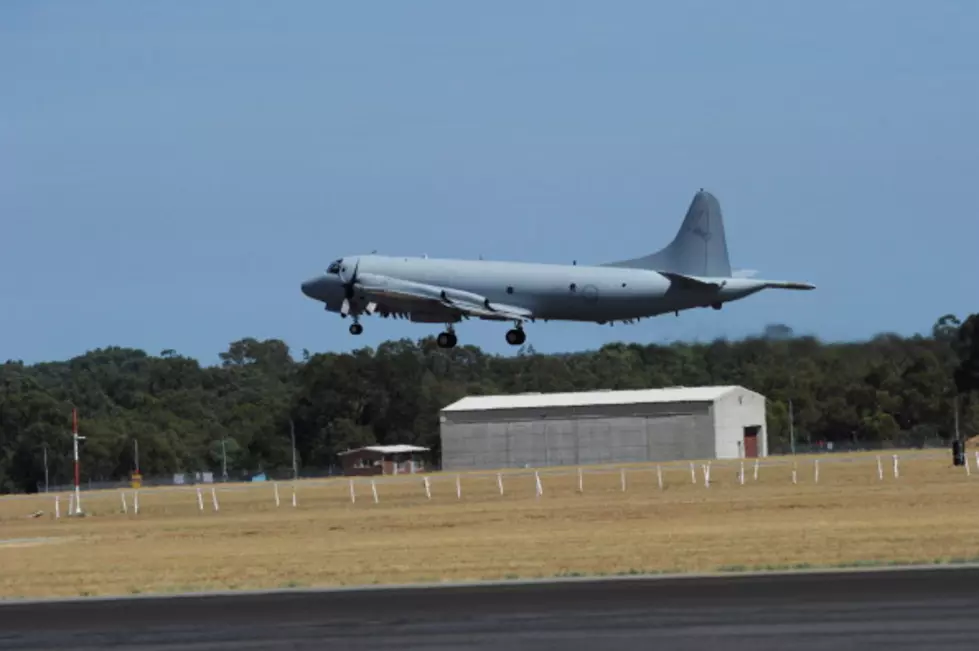
Time Wanes in Malaysia Jet Black Box Search
Four weeks after the Malaysia Airlines jet vanished, two ships deployed sound locators Friday in the southern Indian Ocean in a desperate attempt to find the plane's flight recorders before their signal beacons fall silent.
The air and sea search has not turned up any wreckage from the Boeing 777 that could lead searchers to the plane and perhaps its flight data and cockpit voice recorders, or "black boxes."
The recorders could help investigators determine why the Malaysia Airlines plane, which disappeared March 8 while en route from Kuala Lumpur to Beijing with 239 people aboard, veered so far off-course.
Beacons in the black boxes emit "pings" so they can be more easily found, but the batteries only last about a month.
Two ships with sophisticated equipment that can hear the pings made their way Friday along a 240-kilometer (150-mile) route investigators hope may be close to the spot where officials believe Flight 370 went down.
"No hard evidence has been found to date, so we have made the decision to search a sub-surface area on which the analysis has predicted MH370 is likely to have flown," Cmdr. Peter Leahy, the commander of military forces involved in the search, said in a statement.
Australian Air Chief Marshal Angus Houston, head of the joint agency coordinating the operation, acknowledged the search area was essentially a best guess. He noted that time is running out to find the recorders.
"The locator beacon will last about a month before it ceases its transmissions - so we're now getting pretty close to the time when it might expire," Angus Houston said.
The Australian navy ship Ocean Shield towed a pinger locator from the U.S. Navy, while the British navy's HMS Echo, equipped with similar gear, looked for the recorders in an area that investigators' settled on after analyzing hourly satellite pings the aircraft gave off after it disappeared.
That information, combined with data on the estimated speed and performance of the aircraft, led them to that specific stretch of ocean, Houston said.
Because the U.S. Navy's pinger locator can pick up signals to a depth of 6,100 meters (20,000 feet), it should be able to hear the plane's data recorders even if they are in the deepest part of the search zone - about 5,800 meters (19,000 feet). But that's only if the locator gets within range of the black boxes - a tough task, given the size of the search area and the fact that the pinger locator must be dragged slowly through the water at just 1 to 5 knots, or 1 to 6 mph.
The type of locator being used is a 70-centimeter (30-inch) cylindrical microphone that is towed underwater in a grid pattern behind a ship. It's attached to about 6,100 meters (20,000 feet) of cable and is guided through the ocean depths by a yellow, triangular carrier with a shark fin on top. It looks like a stingray and has a wingspan of 1 meter (3 feet).
Finding floating wreckage is key to narrowing the search area, as officials can then use data on currents to try to backtrack to where the plane hit the water, and where the flight recorders may be.
But with no wreckage found so far, officials can't be confident they're looking in the right place, said Geoff Dell, discipline leader of accident investigation at Central Queensland University in Australia.
"They might be lucky and they might start smack bang right over the top of it," Dell said. "But my guess is that's not going to be the case and they're in for a lengthy search."
The area where crews are looking for the devices lies within a larger 217,000-square-kilometer (84,000-square-mile) search zone that 14 planes and nine ships crisscrossed Friday in hopes of finding floating debris. The search zone is about 1,700 kilometers (1,100 miles) northwest of Perth on Australia's west coast.
Ships sighted a number of objects but none were associated with the missing plane.
The search area has shifted each day as investigators continue to analyze what little radar and satellite data is available while factoring in where any debris may have drifted.
Australia is coordinating the ocean search, and the investigation into the plane's disappearance is ultimately Malaysia's responsibility. Australia, the U.S., Britain and China have all agreed to be "accredited representatives" of the investigation.
Four Australian investigators were in Kuala Lumpur to help with the investigation and ensure information on the aircraft's likely flight path is fed back to search crews, Houston said.
More From New Jersey 101.5 FM









